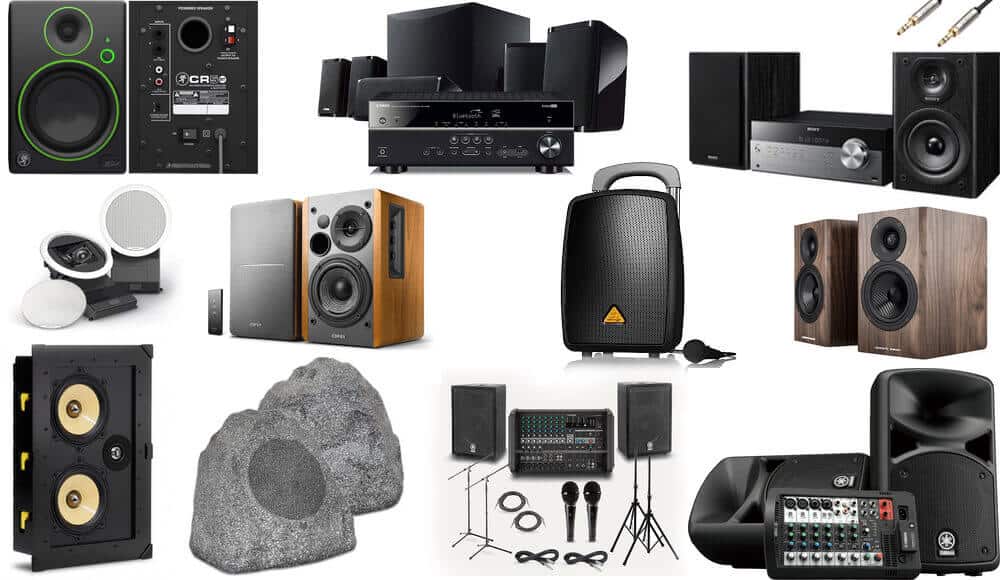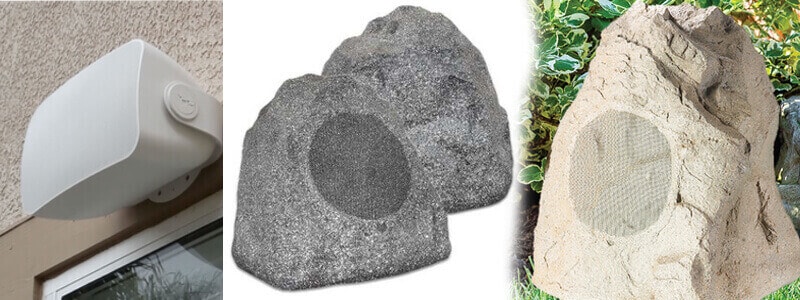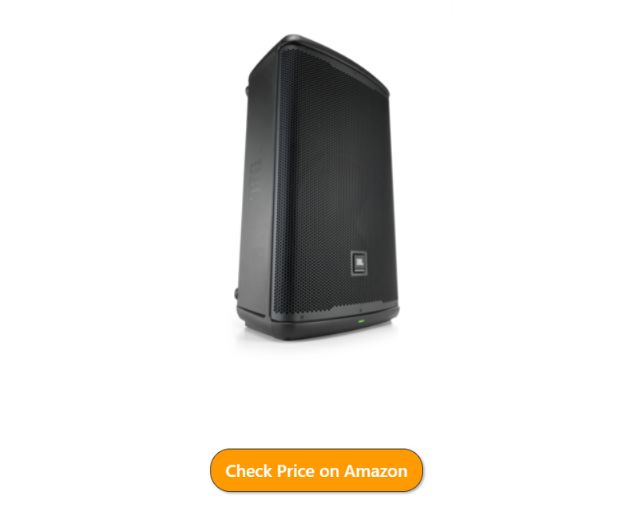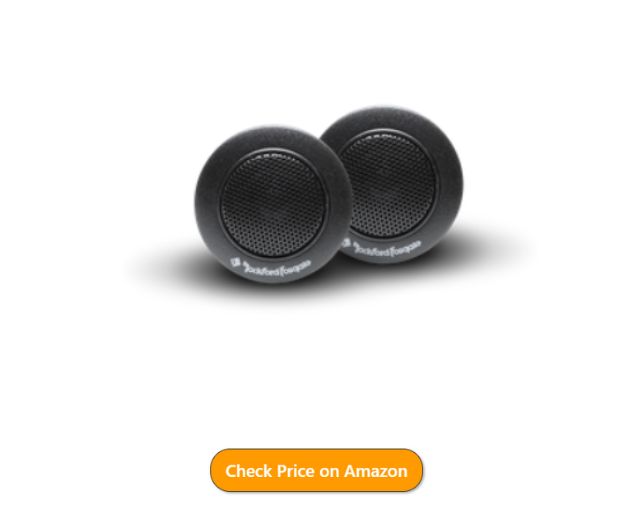
BecomeSingers is reader-supported. When you buy through links on our site, we may earn an affiliate commission. Learn More
Gone were the days when performers and speakers had to shout at the top of their lungs to get heard. Nowadays, if you are a performer or speaker, you don’t need to shout that much to be heard. Moreover, since the rolling out of the first electronic audio, we have been using loudspeakers for amplifying audio signals for audiences during gatherings. Over time, loudspeaker technology has evolved at a rapid clip, and now we have different types of sound systems at hand.
At present, there are four main types of speakers used by homeowners. These four types include the traditional loudspeakers, the soundbars, in-wall/ceiling speakers, and subwoofers. Each of these speakers comes with different functions and purposes, sound quality and hence, has specific applications.
Table of Contents
The Speakers You Will Find in Typical Sound System
If you look closer at the sound system, you will notice that it consists of four types of speakers: loudspeakers, tweeter, woofer speaker, and subwoofer. Below is a short description of these four types of speakers you will find in a sound system:
1) Loudspeaker
If you are an audioholic, you are living in a marvelous time. The reason is that loudspeaker technology has evolved at a rapid clip since the days of the phonograph. At present, you got tons of choices of loudspeakers in the market.
Traditionally, loudspeakers usually come in pairs. They also either come in bookshelf style or floor standing speakers style. You will also find surround sound speakers, which are a slight innovation or variation to the classic loudspeaker.
When choosing a loudspeaker, it will help if you prefer something from known manufacturers even if you have to pay more for it, for trusted brands usually ensure that their products’ quality is maintained at a high level.
2) Tweeter
Besides the loudspeaker, you will also find the tweeter’s sound system—the smallest loudspeaker type—known as the treble speaker. This speaker aims to reproduce the upper frequencies or limits of audible frequencies. The sound frequencies delivered by the tweeter vary from 2,000 Hz to 20,000 Hz.
You will also find special tweeters that can make a maximum sound of 100,000 Hz. Yet, you won’t be able to hear this sound because of the human ear’s limitation. Additionally, the name “tweeter” is derived from the word “tweet,” which refers to some birds’ high pitch sounds.
To create these high-frequency sounds, the speaker’s diaphragm must vibrate faster, and for this reason, the speaker has a small size.
The diaphragm’s size is a crucial factor to allow the speaker’s diaphragm to vibrate faster. Larger drivers won’t be able to do this and can’t generate high-frequency sounds.
3) Woofer
The woofer speakers is tasked to produce low-frequency sounds. It is a bass speakers. More often, it comes with an electronic driver comprising of various polymers or paper. It primarily works in 40 Hz upward; thus, it doesn’t pain or exhaust the human ear much, considering that the lowest frequency audible to the human ear is 20 Hz.
Some loudspeakers cover a frequency range up to 3000 Hz or even 5,000 Hz. Such speakers are referred to as “mid-woofers.” You will more often find these types of speakers in home theatre systems.
You will also find the woofer speakers as big and bulky speakers. They also come with larger magnets compared to other speakers. Moreover, they are capable of reproducing the lower-end.
Additionally, they require a greater surface as well as a more significant amount of raw electric power. For this reason, you will find them with a bigger magnet and a larger diaphragm.
4) Subwoofers
Sub-woofers are necessary to complete the loudspeakers. They come in a separate enclosure and are positioned away from the primary loudspeaker. The subwoofer’s primary goal is reproducing the lowest frequencies that the human ear can hear. These frequencies are referred to as sub-bass and bass. And they are good for bass vocal songs.
The lowest frequency that the human ear can hear is 20 Hz, and sub-woofers operate at this frequency and higher. The sub-woofers always stay below the 100 Hz for professional-grade products and 200 Hz for consumer-grade applications.
Different Types of Sound System
Sound systems may vary depending on their specifications and features. So, if you want to purchase a surround sound systems, it will be useful to know the different types of sound systems at hand. Below are the types of sound system you will find in the market today:
1) Studio Monitors

One type of sound system—that you will often see in a recording studio, filmmaking, television, radio studios, and television studios—is the studio monitor. Studio monitors, of course, are loudspeakers that can provide accurate audio reproduction. Studio monitors, according to audio engineers, should be capable of producing relatively flat frequency responses.
In other words, the studio monitors should show minimal emphasis, which means they should produce an accurate tonal quality reproduction of the audio output source, transparent and uncolored.
Moreover, they should also deliver audio signals with no significant relative phase shift of specific frequencies. This means they should not produce any distortion for stereo recordings. Remember that a linear phase response enables impulse response to remain faithful to the audio source sans smearing.
Monitor speakers may come with different driver types. They should allow you to hear the sound directly from speakers without echoes and other alterations. Moreover, they should allow you a faithful reproduction of audio signals. Monitors may also come in a near-field design, mid-field, or far-field design.
Studio monitors also feature more robust built. They should handle high volumes that come with sudden sound bursts, especially when you use them for playing back and monitoring unmastered mixes.
Check this guide by James Mann on the best vocal loopers.
2) In-Wall/Ceiling Speakers

Some homeowners ensure that the speakers will not affect their interior design. Instead, they want to make the speakers unobtrusive in their home decor. So, they opt for in-ceiling or in-wall speakers. These speakers function like those of regular speakers, but they are usually mounted in frames or set on the walls. Ceiling/In wall Speakers are unassuming speakers because they are hidden from sight.
You can also opt for the use of soundbars. Soundbars come with a sleek and stylish design that complements LED, LCD, and plasma TVs. These soundbars often provide a better sound quality as compared to in-built speakers.
Soundbars contain many speakers in a single housing. They are positioned for bouncing sound off your home walls and for delivering well audio quality across a room.
3) Outdoor Speakers

You will also find outdoor speakers to let you listen to your favorite music while you are outdoors. These speakers are purpose-designed speakers for resisting the changes in temperature and humidity level outside the house. They are also waterproof for such purposes.
Outdoor speakers are robustly built and feature sturdy cases, with metal grilles for protecting their cones from outside factors that may damage them. Their cones also utilize polypropylene materials for added protection. And you will need the speaker receiver system to connect the outdoor speakers with your stereo system.
4) PA System

A public address system is a type of sound system that comes with many components like microphones, loudspeakers, amplifiers, and other equipment. It can amplify the apparent volume of musical instruments, human voice, and acoustic sound sources. You can use the PA system in any venue and any gathering.
You can utilize the PA system whenever you want to hold a celebration or gathering wherein you want the speaker or performer to be sufficiently heard. Thus, you will find the PA system in sports stadiums, facilities, public transport vehicles, and even recorded or live music events and venues.
The PA system may feature many mics, mixing consoles, loudspeakers, and multiple amplifiers. You can also see it in small venues like churches, bars, and auditoriums, while some large PA systems may cover several buildings, extending around colleges and the whole campus. It may also serve as an alert system during emergencies.
The PA system may be elaborate or can be as simple as one portable speakers with built-in EQ and a power amp for signal boosting. The good thing about a mobile PA system is that you can carry it easily from one place to another. You can likewise easily stack it away in your car’s back compartment.
5) Bookshelf Speakers

Sound systems may consist of portable or bookshelf units. It may also feature an elaborate setup that features surround sound and many advanced features. Thus, you will find ultra-thin and compact music stereo systems for smaller apartments and rooms that can’t have a more extensive surround sound system. Can be used as computer speakers.
6) Home Stereo Sound System

Another sound system is the home stereo sound system that includes car stereo systems found mostly in modern automobiles. These systems may come with sub-woofers, amplifiers, and many other components. Many of these systems also have DVD or compact disc players.
High-end stereo systems may come with tower loudspeakers and speakers that are enclosed in glass or wood cabinets. It may also include in-wall or in-ceiling speakers with a complex wiring network. These speakers may feature an aluminum, gray, or platinum enclosure finish. Some may likewise come with special application speakers.
7) Home Theatre Stereo System

When watching movies at home, you will find the home theater stereo system very much enlivening. This system enhances your listening and watching experience, giving you a theater-like experience. This system usually requires output power wattage. Many of these systems also come with digital surround sound or Dolby.
Active Speakers VS Passive Speakers
Active Speakers
You will also find active speakers in many sound systems. Active speakers are quite easy to set up and come with built-in amplifiers that complement the speakers’ components like woofers, mid-range, and tweeters. Active speakers also feature crossovers that could isolate and at the same time route frequency ranges to every component.
Active speakers also feature built-in limiters for drivers’ protection. You will also find three-way active speakers that feature two or more crossovers (built-in) that isolate low, mid, and high frequencies. These types of speakers are easy to set up and operate. You will only need a line-level input, and you don’t need to use a standalone amplifier to operate them.
Passive Speakers
The counterpart of the active speakers is the passive speakers that require amplification and speaker cables. These speakers need an outboard crossover and signal processing. You will find passive speakers that use an internal crossover network. This network works like that of the active speakers. Other passive speakers are either tri-amped or bi-amped, which can be advantageous, given that they allow for more control over the speaker’s components.
Nevertheless, they also require separate amplifiers for every component. However, one caveat is that you should carefully look at the manufacturer’s specifications to know the right amplifiers for these speakers.
Conclusion
The best sound systems should deliver balanced sounds for low, mid, and high frequencies. If it fails to provide such a balanced sound, then it fails in its primary purpose. Surround sound systems, of course, come in various styles and may sport varied specifications and features.
Your sound system setup should suit the venue and the applications you want your sound system to achieve. Thus, it is essential to carefully consider the applications and your surround sound system intended use before you zero in on a particular sound system for your needs.







